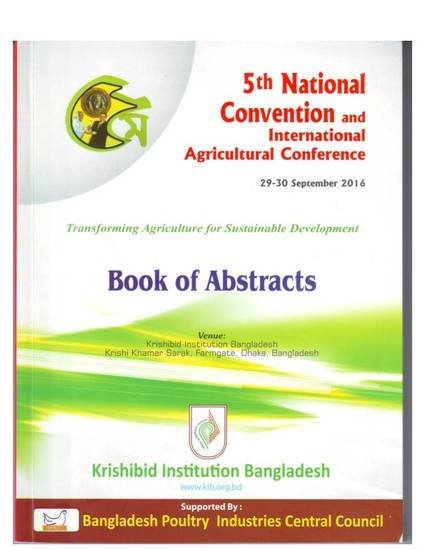
Presentation
Next Green Revolution: This Time With Open Source Agrobiodiversity!
5th National Convention, International Agricultural Conference, Council Session & Annual General Meeting 2016 of KIB
(2016)
Abstract
Agrobiodiversity or agroecology includes all the biodiversity related to food and agriculture. It is the result of the interaction between the genetic resources, the environment, the management systems and the farmer’s practices. Thus the agrobiodiversity is a result of both natural selection and human interventions happening since the time of first practice of agriculture. However, under the intellectual property rights (IPR) regime, any inventions or innovations which are unique or distinctive, have utility and industrial applicability are granted protection was extended to living organisms such as microbes, plants and animals with the US Supreme Court decision in Diamond v Chakrabarty case. Now the plant varieties or any new crop and livestock improved varieties gets sui generis system of protection and farmers can only save, use and share but cannot further improve the varieties developed. However with the increase of demand for the food and fiber by the burgeoning population and the need for the development of stress tolerant and climate resilient varieties, new programmes like participatory breeding are necessary for the development of agriculture. Under the sui generis system of variety protection measures, the farmers were given only rights to save, use and exchange seeds but not for commercialisation. The commercialisation of the new improved varieties developed from the existing biodiversity is allowed when contribution for the Gene Fund is made which would be utilised for the benefit sharing or for the safeguarding or the maintenance of the native biodiversity for the sustainable production of food and agriculture. However the availability and accessibility question is still at large. When we are talking and working towards the next Green Revolution we would need the new varieties which would use less of fertilizers and pesticides and are breed from the local adaptable germplasm. As the agrobiodiversity is largely made and maintained by human activities and management practices, and a large number of people depend on it for sustainable livelihoods, there should be freedom to access the local germplasm, freedom to use the improved varieties for further improvement is essential to sustain agriculture and human well-being. To place it more precisely, the agrobiodiversity should be free as in freedom and open source without licensing restrictions and huge royalties. This would encourage the development of new generation varieties by the participatory breeding and more availability and accessibility of the seed materials can be ensured which are tolerant to stress, adapt to local climatic conditions so that there would be minimal effect on agricultural biodiversity, sustainability, socioeconomic and cultural dimensions of the farming community.
Keywords
- Open Source,
- Open Access,
- Agrobiodiversity,
- Seeds,
- Commons
Disciplines
Publication Date
September 29, 2016
Location
KIB Auditorium, Krishi Khamar Sarak, Farmgate, Dhaka
Citation Information
Sridhar Gutam. "Next Green Revolution: This Time With Open Source Agrobiodiversity!" 5th National Convention, International Agricultural Conference, Council Session & Annual General Meeting 2016 of KIB (2016) Available at: http://works.bepress.com/sridhar_gutam/64/
Creative Commons License

This work is licensed under a Creative Commons CC_BY International License.
